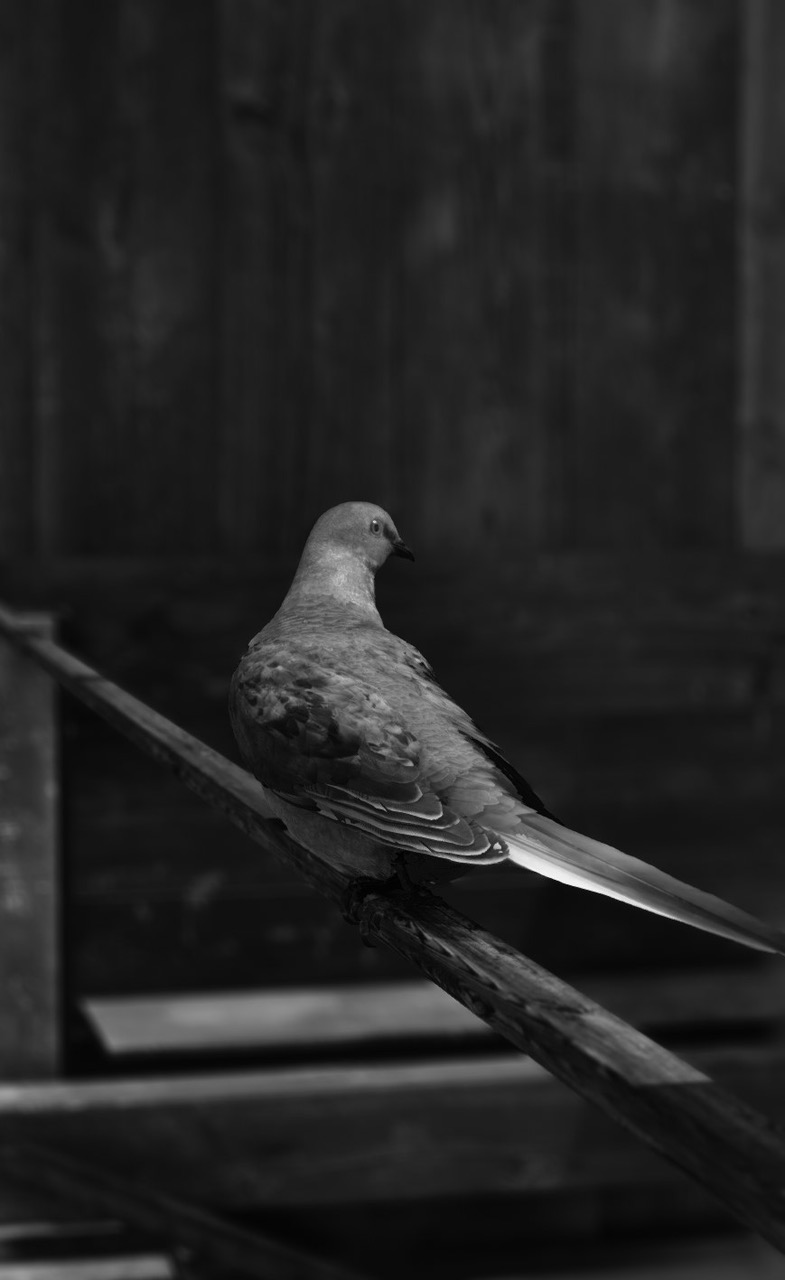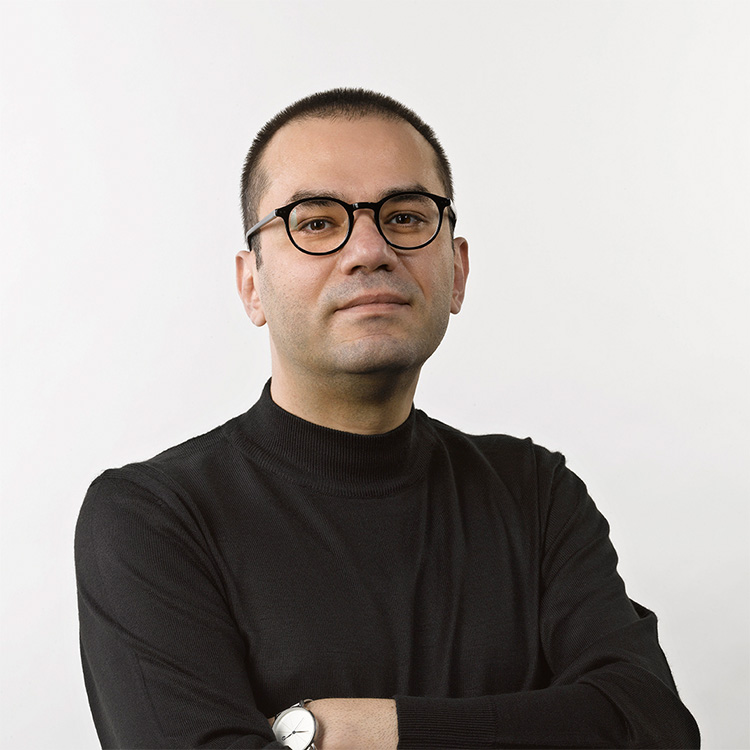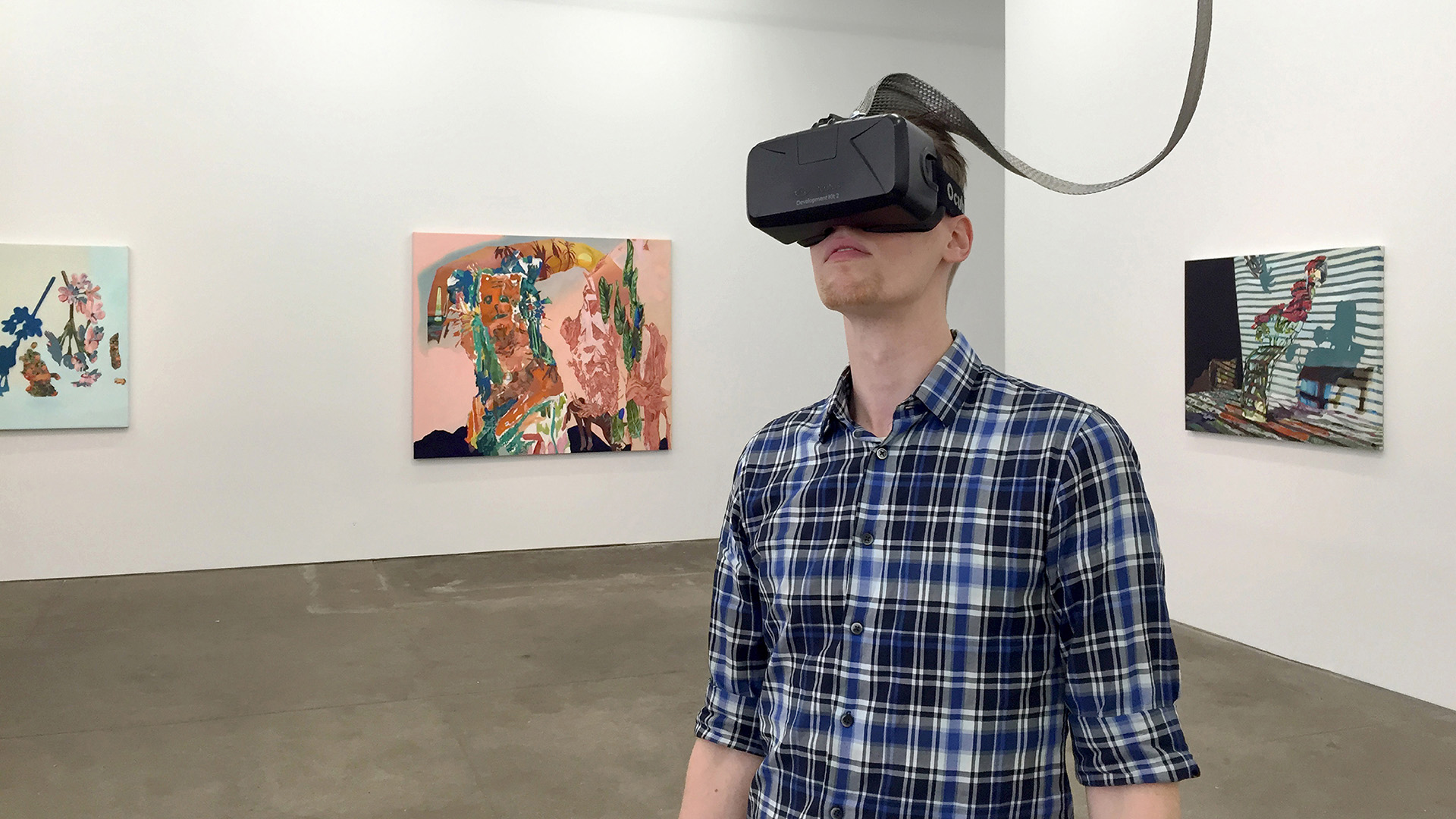Blog
The Portrait of Martha
17 December 2021 Fri
“A pigeon, when I die
Of many sorrows in foliage
A pigeon, when I die.” 1
Cemal Süreya
If you have stopped by Akaretler this past October, you might have stumbled upon a bird peeking at you from a screen placed behind a window on the sidewalk of Sıraevler. Martha is the name of that bird. The passenger pigeon in the Cincinnati Zoo who was left alone when her cagemate George passed away in 1910, rising to fame as the endling of its kind until the day she was found dead four years after. 2 Her taxidermied body is still among the most treasured items at the Smithsonian National Museum of Natural History. 3
Author and painter Errol Fuller who has published several researches on extinct animals, accounts in his book “The Passenger Pigeon” that Martha, as the last remaining member of this species that is in the habit of relocating in flocks had become immobile in the last years of her life that were spent in solitude. When the visitors of the zoo had begun finding her immobility dull and throwing various objects her way to make her move, the wardens formed a security cordon around the cage to prevent people from coming too close. 4 During that period of time, Martha was photographed numerous times in the living arrangement that was allocated to her, which measured merely five and half by six meters. Collected from the Internet and various resources by John Gerrard, these photographs constitute the foundation of the digital simulation work commissioned by Borusan Contemporary, titled Endling (Martha).
In this work produced in collaboration with 3B modeling experts 5 , we watch Martha move on the twig where she is gracefully perched. It might be difficult to comprehend that the images of this bird, which stops suddenly to change her position, slowly turns her head, blinks and gulps, are not video footages. There is something unusual about these images. While the small bodies of other pigeons swell up and down during inhalation, Martha’s does not move. This sole detail, making us understand that these images we watch do not belong to a living bird, brings us closer to the reality of Martha.

John Gerrard, Endling (Martha), 2020.
Fuller notes that passenger pillows in North America were innumerable until the early 19th century; reaching billions in number, these birds are estimated to have been the most populated kind of birds on the planet. 6 Information passed down from the early period colonialists indicate that the passenger pigeons were so densely populated that they could smother the sky like a black cloth and that it was quite easy to catch them. It wasn’t until the 20th century that the settlers became cognizant of the fact that an animal could become extinct by way of killing. In order to visualize the period during which the passenger pigeons reigned over the North America, as told by Fuller in the form of a tale, it is sufficient to recall Alfred Hitchcock’s movie, Birds – however, the script must be flipped. In the early colonialist period, the anxiety caused by the untamable nature of the birds had been evident although it had not turned into a mass hysteria. Yet the first ones plotting for vengeance were not the pigeons, which constantly relocated within their own habitat, but the neo-European farmers whose crops were plundered. In the official trailer of the Birds, Hitchcock teaches a sarcastic lesson on humanity’s historical relationship with birds. 7 Reminding that Dodo, the great auk, and the passenger pigeons are now extinct, Hitchcock implies that those who adorn their hats with birds’ feathers, who eat their eggs and make decorative objects out of their stuffed bodies, have long deserved their misfortunes.
Hunting alone however, is not forceful enough to wipe out such a populous species that had existed for millions of years in the short amount of time of a century. The reasons as to why the population of passenger pigeons began to decline from mid-19th century onwards should also be sought elsewhere. Manuel DeLanda speaks of the mass migration of Europeans to North America in the biological history chapter of his study based on new materialism. While interpreting the consequences of this population mobility, which gained momentum in the 19th century and continued its course until mid-20th century, he resorts to the analysis of imperialism by Alfred W. Crosby who is recognized for his contributions for the environmental history. Crosby claims that the settlers gained power in the temperate regions of the New World by devastating local populations and transforming landscapes with the aid of other species (microbes, weeds, domesticated plants and animals) they had brought along, and in his book Ecological Imperialism, he defines these migrants as neo-Europeans. 8 To quote Braudel, it has taken quite some time for Europe “to create a new world in its own image beyond Atlantic.” 9 In order to feed the settler communities that flock to North America, deciduous forests, which were home to passenger pigeons, had been removed and converted into agricultural lands. The concurring rise of the organized medicine (prevalence of inoculation and the constitution of modern hospitals) leads to the further growth of human population. 10 As for the passenger pigeons, more people meant more excessive hunting and a further narrowing of their terrain.
Although the similarities and discrepancies between colonialism and imperialism are the subjects of a much longer discussion, it is evident that these two concepts are related to one another and in many of his works, John Gerrard focuses on different aspects of the imperialism in question. The exertion to reach petroleum reserves, which is considered among the most determinative elements of the 20th century imperialism by certain theorists, comes across in Gerrard’s work as metaphorical cycles. Those who’d like to follow contemporary art on social media would remember Gerrard’s work, Western Flag (2017) that had been widely shared on virtual platforms. 11 In this work, the artist turns his gaze to the Spindletop region in Texas, where the first discovery of petroleum had been made in the world. The fuming black smoke streaming like a flag on top of a pole erected in the midst of Lucas Well, from which the petroleum had continued to gush out for nine days straight after the discovery of the reserve, delivers a critique of the Western imperialism of the 20th century. In his other works conceived as the digital depictions of the drilling towers, the artist turns the images of oil wells in the United States of America and Canada into computer simulations. 12 The initial work of this series titled Animated Scene was shown at the solo exhibit of Gerrard at Borusan Contemporary in 2014. 13
There is yet another similarity between his Animated Scene series and Endling (Martha); the artist defines his simulations recreating the drilling towers as portraits. At first glance, we may think of Endling (Martha) as the portrait of an animal, too. Having said that, in both instances, there is a formulation that challenges the tradition of portraiture. This similarity in both works arises from Gerrard’s disposition to reconsider notions that are inherent to art history, and to reintroduce these notions by transmuting them with today’s technologies and the tools of expression. In the article written for the exhibition, “Exercise” at Borusan Contemporary, Robin Mackay has addressed this and has emphasized the quality of Gerrard’s works that disrupts distinctions between portrait, landscape and historical painting. 14 Perhaps the works from the Animated Scene series and Endling (Martha) are both the portrait of the very same thing; of something they don’t necessarily show: the portrait of human who races off to consume natural resources in greed, assuming they are infinite. In order to see this portrait we are familiar with but that we cannot yet fully grasp more lucidly, we must take a look at the discourse of Anthropocene that gained momentum in the last two decades.
Anthropocene is a concept proposed for the geological period wherein the humankind’s transformative impact on soil and water systems, atmosphere, as well as other living organisms is observed. While different historical moments spanning from the Neolithic Revolution to World War II are postulated for the origin of the Anthropocene, the predominant conviction is that humankind’s impact since the mid-20th century has aggravated significantly by comparison to any other era. Debates around this subject that was popularized since early 2000s continue in an escalating trend. According to some, Anthropocene cannot be anything more than a “charismatic mega-concept.” Other theorists led by the likes of Donna Haraway and Jason Moore on the other hand, acknowledge the gravity of circumstances indicated with the notion of Anthropocene but maintain that the term’s emphasis of parity is erroneous. According to these theorists, the accountability of this ecological disaster on earth cannot be assigned equally to all humans, and the most apt expression for the geological era we are living in is Capitalocene. However this denotation is not exempt from criticism. Capitalocene can hardly express the existential crisis and the fragility of humankind that are raised by Anthropocene because the problem may be even greater than the capitalism itself. 15 Imparting in her book, Tentacular Thinking (2016) that she would continue, howbeit seldom, using the word Anthropocene but that she would actually prefer the term Capitalocene, Haraway proposes a new word: chtulucene. Inspired by a spider species whose Latin name is Pimoa cthulhu that is sighted in California where she lives, Haraway intends to develop a thinking system wherein divisions between different living beings diminish. If the damage inflicted on earth by humans is irreversible – and certain scientists believe that we are rapidly advancing towards that stage – the debates about the denomination of this period we are living in resembles discussing what we should call a dying patient who cannot tell her/his name.
The simulation, Endling (Martha) and the works from Animated Scene series can also be reanalyzed through what they don’t show, but as distinct portraits this time around. When looking at the motion of oil drilling cranes, we don’t see the reserves on which they are engrafted just as we can’t see the whole population of passenger pigeons whose quantity could never be calculated, when looking at Martha. Yet both works indicate these masses, which are absent on the screen. At that conjuncture, I’d like to approach Gerrard’s manner of portraiture with the notion of hyperobjects by Timothy Morton who is an active theorist in the Anthopocene studies. Morton identifies hyperobjects as “things that are massively distributed in time and space relative to humans.” 16 A black hole or the Solar System can be thought as a hyperobject in that sense. Plastic bags produced by humans and Lago Agrio petroleum reserve in Ecuador, which harms its surrounding ecosystem greatly are among the other examples Morton gives for hyperobjects. As such, it is also safe to appraise other petroleum reserves in Gerrard’s Animated Scene series as hyperobjects. If the passenger pigeon herds described in the mid-19th century records, were so crowded that they could encircle the earth 22.6 times 17 as given in certain estimations, the thousands of years-long existence of the passenger pigeons might as well be defined as a hyperobject. Within this conceptual framework by Morton, Gerrard’s simulations become the portraits of what he does not show but rather imply.
According to Morton, hyperobjects makes it possible to reposition epistemology within reality. When compared to hyperobjects, transcendental leaps that take the mind beyond the knowable, experiential world become impossible. There isn’t a mind that can look at the world from outside; the mind and the language it generates are inside the world. By extension, there is no meta-language either. We live in the physical reality on which we think and comment. According to Morton, the undeniable reality of hyperobjects and their magnitude that exceeds the human mind’s perceptive capacity debilitate the cynical critical approaches’ capacity to explain matters. Morton asserts that there is a great deal of things that we don’t know about hyperobjects and that analogies, comparisons, or metaphors, to put it differently, regain functionality given we no longer have a meta-language that purports to explain everything. 18 In that regard, we can take Gerrard’s simulation Endling (Martha) as the metaphor of all passenger pigeons that are extinct – as a matter of fact, of each and every species that were brought to extinction by humankind. This is exactly what I have been intending to construe since the outset of this text.
In his lengthy article penned for The Guardian, which included their correspondence with Morton, Alex Blasdel reevaluates Morton’s theory within the framework of current discussions. The article – aside from its terrible title – succeeding to yield a comprehensive introduction to Timothy Morton’s theory, relays severe critiques towards Morton as well. Despite all its frivolousness, in Morton’s theses, there are remarkable insights regarding the Anthropocene. For instance, we continue to do the same things, not inadvertently but fully knowing that we are the impelling sources of global warming and ecological destruction. Morton’s generic approach ignores the asymmetrical distribution of liability of the Anthropocene among distinct communities, classes, and genders, which is the most problematic aspect of his theses. Nonetheless, he proposes the concept of “dark ecology” based on the contention that this frightening disaster has long occurred. “Dark ecology” carries the potential to be the igniter for a cognitive leap in our expectations about future, the probable behavioral changes that will ensue and diverse action possibilities. Morton maintains that people can coexist with other species by giving up their claim of hegemony and joins to other theorists of the Anthropocene. “Dark ecology” conjures yet another work by John Gerrard. In his simulation titled X. laevis (Spacelab), the artist examines the possibility for humans to coexist with frogs that are able to propagate in the space with zero gravity, after they are forced to leave the earth. 19
Fuller thought that another factor that accelerated the extinction of passenger pigeons along with hunting and deforestation was due to the very nature of these birds. 20 Passenger pigeons were social and companionable animals; they weren’t afraid of humans no matter what they experienced and the existence of their herd was essential for survival. These qualities, which ensured their population to be one of the most crowded bird species on earth has precipitated their extinction after the critical threshold was surpassed. In the interview conducted by Naz Cuguoğlu, John Gerrard likened the Endling (Martha) simulation to a shamanic hybrid of human and bird. Perhaps, we can learn how hegemony and extinction can surprisingly breed from the same source from this shaman who is both a savant of the past and a messenger of the future.
1- Süreya, Cemal, “Az Yaşadıksa Da”, Göçebe, İstanbul: YKY, 2019, p. 25. (Original version in Turkish)
3- https://naturalhistory.si.edu/research/vertebrate-zoology/birds/collections-overview/martha-last-passenger-pigeon
4- Fuller, Errol, The Passenger Pigeon, New Jersey: Princeton University Press, 2015, p. 117
5- John Gerrard’s interview with Naz Cuguoğlu, https://blog.borusancontemporary.com/en/blog-with-john-gerrard-on-endling-martha_2042
8- Crosby, Alfred W., Ecological Imperialism, New York: Cambridge University Press, 2004, p. 148-9
9- Braudel, Fernand, The Perspective of the World, Berkeley: University of California Press, 1992, p. 388
10- De Landa, Manuel, Çizgisel Olmayan Tarih, İstanbul: Metis Yayınları, 2019, p. 205-6
12- Universal (Near Iron Springs, Alberta), 2010; Lufkin (Near Hugo, Colorado), 2009; Sentry (Kit Carson, Colorado), 2009, Animated Scene (Oil Field), 2007
14- Mackay, Robin, Introduction, “Exercise” exhibition brochure, March 1 – June 1 2014, Borusan Contemporary, Istanbul
16- Morton, Timothy, Hyperobjects: Philosophy and Ecology after the End of the World, Minneapolis: University of Minnesota Press, 2013, p. 1
18- Morton, Timothy, Hyperobjects: Philosophy and Ecology after the End of the World, Minneapolis: University of Minnesota Press, 2013, p. 1-27
20- Fuller, Errol, The Passenger Pigeon, New Jersey: Princeton University Press, 2015, p. 70-90
ABOUT THE WRITER
İbrahim Cansızoğlu
İbrahim Cansızoğlu, Istanbul based art writer and researcher.
He earned his undergraduate degree at Koç University Economics Department which he attended with full scholarship. He completed Sabancı University Visual Arts and Visual Communication Design Graduate Program with his MA thesis on aesthetics of moving image. At conferences organized by the University of Reading, the University of Hertfordshire and the University of Winchester, he presented his researches based on his thesis. He had a certificate from London Film Academy. He taught in film, visual theory, visual culture and contemporary art at Izmir University of Economics and Kadir Has University.
He worked at Galeri Nev Istanbul between 2012 -2015. He took on the task of curatorship in independent projects and in the context of Protocinema Emerging Curator Series in 2017. He continues to contribute art magazines Sanat Dünyamız and Art Unlimited with interviews and articles. He writes for the online art platform Argonotlar.




